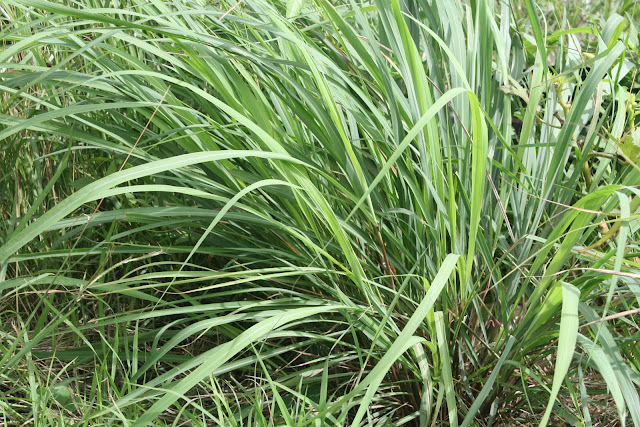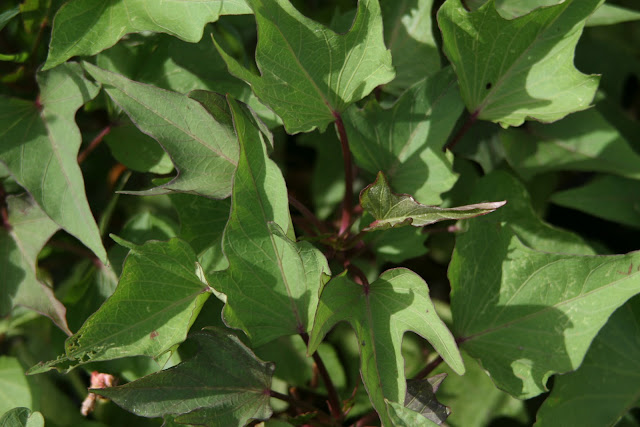 |
| Although the eggplant was always very productive, my harvests are suddenly significantly more abundant. |
-- My planting season experiences in a tropical organic garden --
Located midway up the 'Northern Tropic' (aka the Tropic of Cancer), my tropical organic garden experiences 2 seasons within the year. Officially, they are as follows. However, I find that I can follow this with a few weeks, even months of tolerance in the case of some plants.
- Dry season: roughly from start of January to end June
- Wet season: roughly from start of July to end December (to coincide with the hurricane season)
-->
This image of kale is a case in point. It had been so lush some months ago. Suddenly, its heat-related stress appears to be attracting pests. Other plants that suffered this way were:
- Arugula (still producing but suddenly always covered with voracious caterpillars)
- Pak Choy
- Lettuce (just never developed lovely fulll and tender leaves. No more wide varieties of gourmet lettuces for breakfast.)
- Broccoli (before drying out to a crisp, my broccoli suffered the same fate as the photographed kale above)
- Kangkong (the plant is being aggressively attacked by white flies. They are still producing leaves. However, the patio plants are doing considerably better than the ones outside.)
- Basil (is still edible but the flowers have already dried and seeding so the leaves are not as plump as previously)
- Strawberries (the plants are still spreading but they are no longer flowering. The leaves look generally smaller and less verdant than they had been some months ago)
-- How to still eat lots of greens during the dry season --
I figured a great way of having greens even during the dry season.
- Kangkong (the plant is being aggressively attacked by white flies. They are still producing leaves. However, the patio plants are doing considerably better than the ones outside. I apply a lot of my homemade garlic spray to maintain the plant.)
- Sweet potato (I grow sweet potatos not for the root but the nutrtious leaves)
- Moringa (See how to successfully grow moringa oleifera from seed. Moringa is drought tolerant. Consequently, I know that I could always use the leaves during the dry season as a fantastic source of greens).
-- Happy plants despite the dry season --
Over the last month or so, I have enjoyed an abundance of these peppers to the point of seeking people to whom I could give away peppers. The plant in the photo below was pulled up from its very shaded location. It was growing against a lemongrass plant that towered about 2.5 foot over it. Perhaps these peppers like some shade.
| Almost 1.5 feet tall, this pepper plant was laden with 14 peppers. It is wet after I sprayed it with my homemade garlic spray. |
 |
| Roughly one-foot dwarf pommegranate laden with many fruits. BTW, the fruits are edible but said to be less delicious when compared with the fruit from the larger varieties. |
 |
| Flower on my Cape Gooseberry (aka incan or poha berry) plant on 18 June 2012 |
 |
| Pommecythere growing in recycled wooden barrel on 4 June 2012 |
 |
| Lemon grass planted directly into the ground 7 May 2012 |



I have had NO luck growing any greens here in Western PR. I am assuming it's due to the fact that they are considered cold weather crops and the coldest it gets here is lmid-ow 60's on winter nights (December-April). I am giving broccoli ago, but I'm cautiously optimistic at best.
ReplyDeleteGreat re trying brocco! I'm wondering whether you will have best success during the earlier part of your 'winter months'. Maybe! December was an excedingly happy time for me as a gardener. I used to love harvesting when neigbors might be looking. :)
Delete